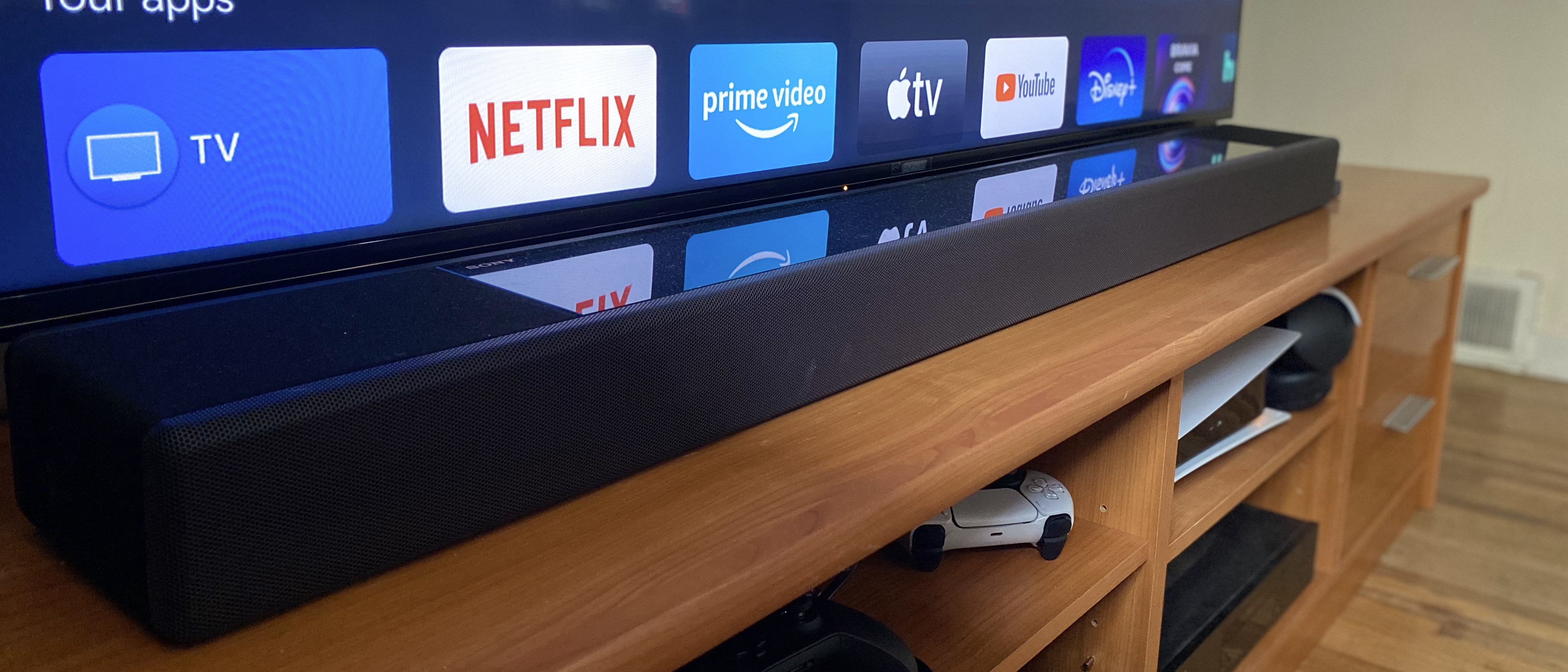TechRadar Verdict
The Sony HT-A7000 may have a massive sticker price, but it promises a long shelf life thanks to its two HDMI 2.1 ports and support for all the major spatial audio formats. At this price we wish it came with the surround and subwoofer units, but those with incredibly deep pockets can tack those on for a few hundred more.
Pros
- +
Supremely clear dialogue
- +
Two HDMI 2.1 ports
- +
Atmos, DTS: X and 360 Reality Audio
Cons
- -
Limited height channels
- -
Sub and surround speakers cost extra
- -
Small LED display
Why you can trust TechRadar
Editor's note
• Original review date: March 2022
• Current Sony flagship Dolby Atmos soundbar
• Launch price: $1,399 / £1,299 / AU$1,699
• Target price now: $999 / £1,299 / AU$1,699
Update: February 2024. The Sony HT-A7000 remains the company’s flagship soundbar, and the only all-in-one model equipped for 7.1.2-channel Dolby Atmos sound. It was initially pricey at launch, and remains so in the UK and Australia, though its price has seen regular drops in the US, with discounts from $1,399 to around $999 being common. That price makes it competitive with the Sonos Arc, the 5.0.2-channel flagship soundbar from Sonos. The Sony’s higher channel count, multiple HDMI inputs, and DTS:X support make it a superior option to the Arc, however, and the now under-$1,000 price, while still high, is a better value than at launch. The rest of this review remains as previously published.

One-minute review
The Sony HT-A7000 comes with a pedigree. It follows the Sony HT-ST5000 as the company’s new de facto flagship soundbar and it carries an air of distinction.
What helps elevate the HT-A7000 above its competitors is its integrated upfiring speakers that help it support true Dolby Atmos and DTS:X, with a sprinkling of Sony’s new 360 Reality Audio format thrown in, too.
There are other niceties thrown in at this price - such as the two HDMI 2.1 ports that will allow you to connect both your PS5 and Xbox Series X to the soundbar - and it even has room to grow thanks to an optional subwoofer and rear surround speakers.
At this price point we wish some of those optional extras were simply included in the box and that the height channels produced a more convincing soundstage, but what’s on offer is a powerful, room-filling soundbar that richly deserves a place amongst the best soundbars.
Price & release date
The Sony HT-A7000 Soundbar made its debut at the tail-end of 2021, effectively replacing the older Sony HT-ST5000 model that long held a position on our best soundbar list.
Sign up for breaking news, reviews, opinion, top tech deals, and more.
In terms of pricing, the Sony HT-A7000 comes in at $1,399 / £1,299 / AU$1,699 - and that’s just for the soundbar. If you want to add a subwoofer and rear speakers, that’s going to cost you an extra $300 / £449 / AU$599 and $350 / £449 / AU$649 respectively, depending on which of Sony’s two subwoofers you decide to use. (The more expensive subwoofer, the SA-SW5, costs $698 / £699 / AU$899 by itself, so be prepared for that.)
For a soundbar, that’s a lot of money - especially if you plan on buying all the extras that go with it. Overall, that’s not a horrible price if this becomes your one home cinema purchase for the next decade, but most folks will want a more flexible option at this price point.
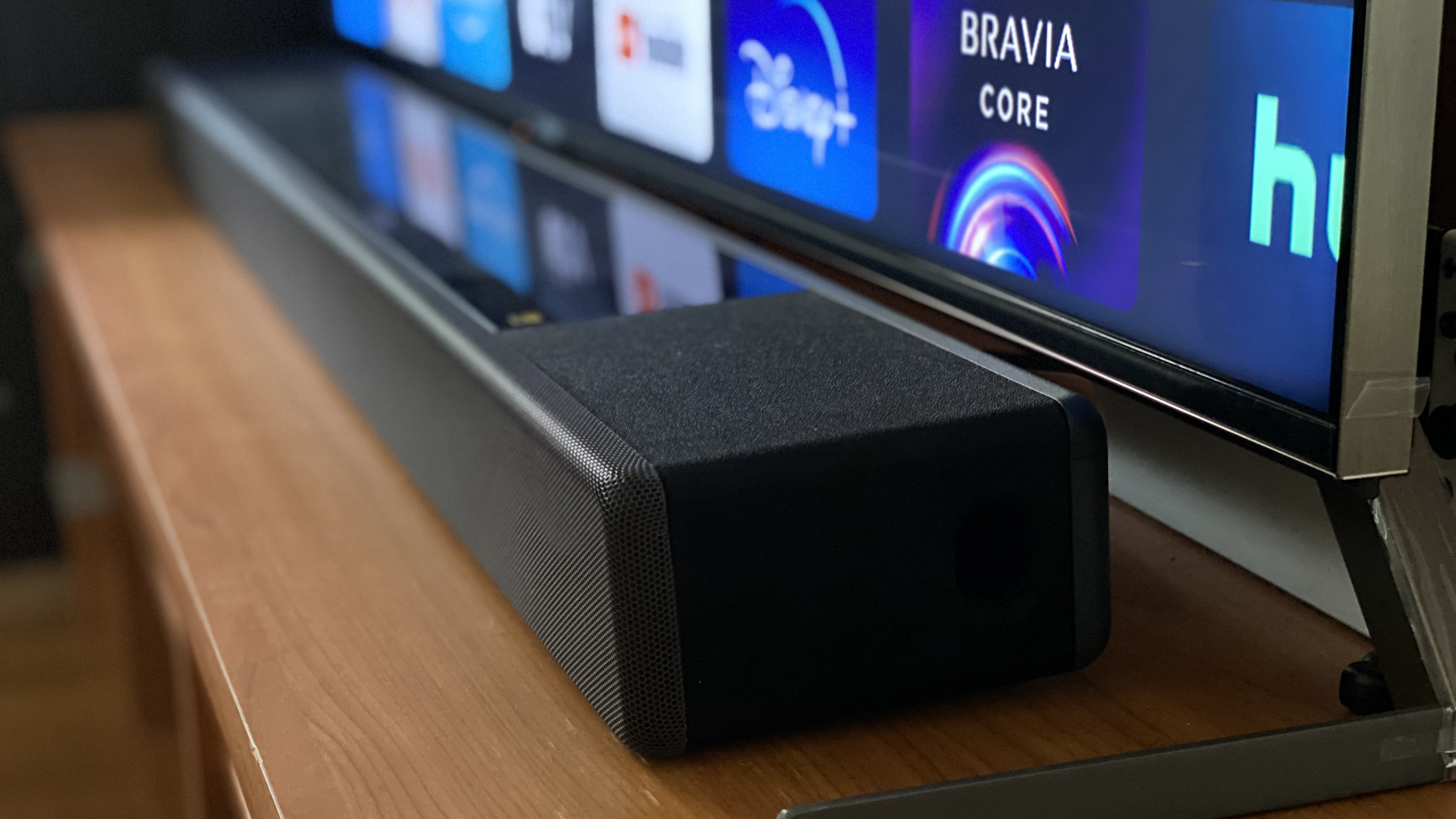
Design
At roughly 51 inches long and three inches tall, the HT-A7000 is a pretty big ‘bar. It’s just the right size to fit underneath a Sony X95J TV or one of Sony’s new OLED TVs, but it could very easily block the IR sensor on TVs from other manufacturers or collide with the legs.
In short, it’s a long bar and probably not the best partner for any screen below 55 inches.
The good news is that big ‘bars like these often pack big drivers to go inside of them - and that’s absolutely what’s going on here. Inside the HT-A7000 are two upfiring speakers for overhead sound, two beam tweeters and five front speakers and a subwoofer that’s in charge of handling the bass for a total output of 500W.
Covering all those speakers is a mish-mash of textures and materials. On the front is a metal grille that covers all the front-firing drivers and a small LED screen, while on the top you’ve got a fabric mesh covering the upfiring drivers. There’s also a glossy finish on the top where you can find the touch-capacitive control buttons.
The LED screen certainly works well when you’re simply changing the volume, but it’s not the most helpful in showing you which format you’re working with: other soundbars will turn a certain color when they detect an Atmos signal or display it on the front LED. The A7000 does neither.
The included remote is straightforward to use, though you’ll be able to use your TV’s remote should you connect the soundbar via HDMI to your TV or AV receiver, which we highly recommend.
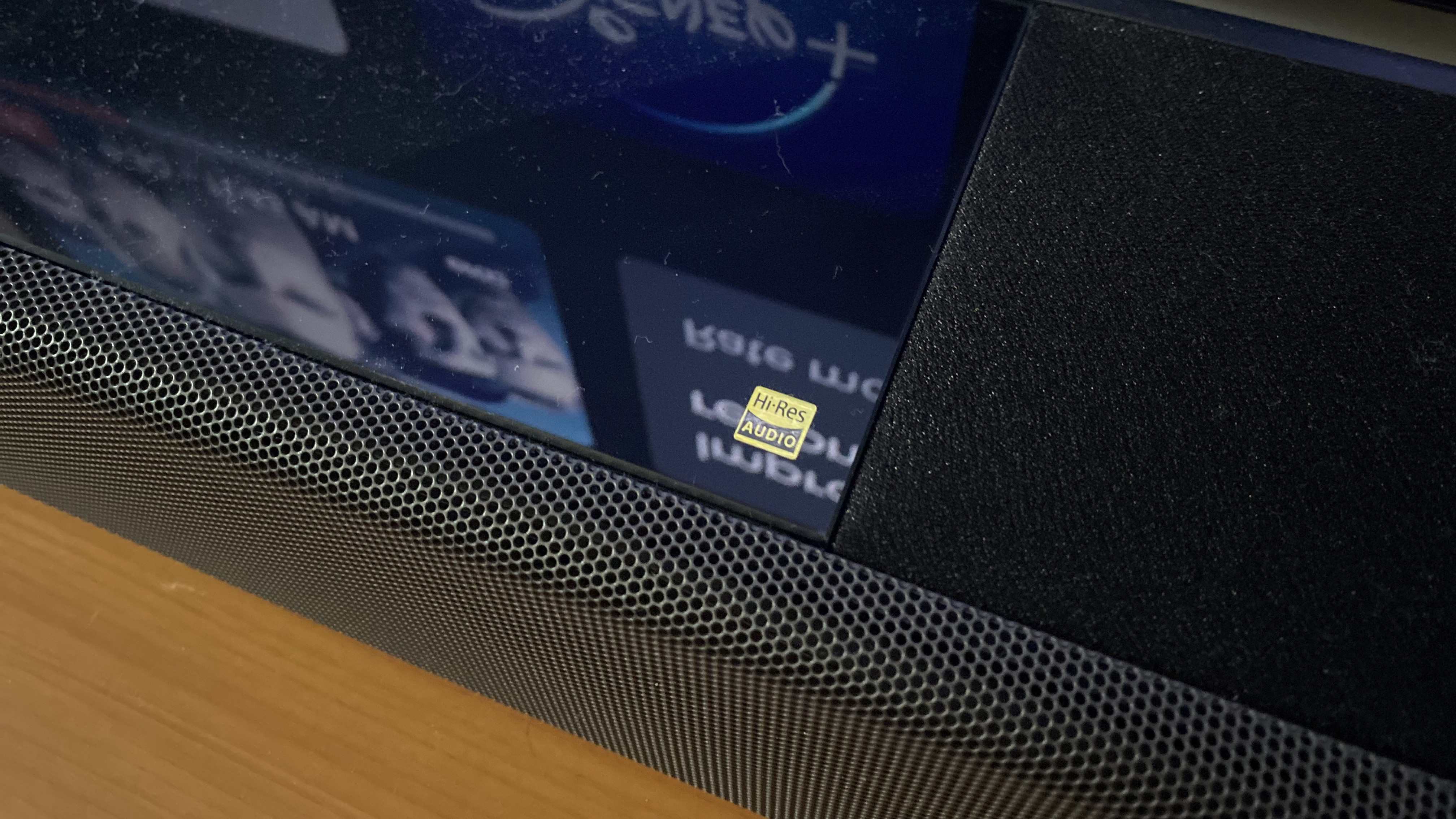
Features
If you have a TV with an eARC port, you should have next to no problem setting up the HT-A7000. It’s really as easy as plugging in the power cable and running an HDMI cable between the TV and the soundbar.
That being said, if you want a more in-depth setup and calibration process, Sony makes that relatively simple by building a basic UI into the soundbar itself.
The most basic step you can take to improve the sound quality of the soundbar is to run a basic room calibration test. This takes just 20 seconds and it will help the soundbar know how far away from walls it is and which channels need extra power.
You can manually adjust those settings for yourself in the simple UI Sony provides, but most folks should be fine with just the automatic calibration.
Also this UI is where you can select other sources for audio. The soundbar supports HDMI obviously, but also 3.5mm auxiliary, Bluetooth audio, USB devices, Spotify, Chromecast, Amazon Alexa and 360 Reality Audio via Deezer, Tidal and Amazon Music. It’s a very wide selection of sources, and allows you to have some flexibility in terms of what you want to connect.
Speaking of music, Sony also included its DSEE Extreme upscaling tech in the soundbar that helps restore details lost in the wireless transmission process. It’s something we’ve seen in the company’s flagship WH-1000M4 headphones, but not in a soundbar.
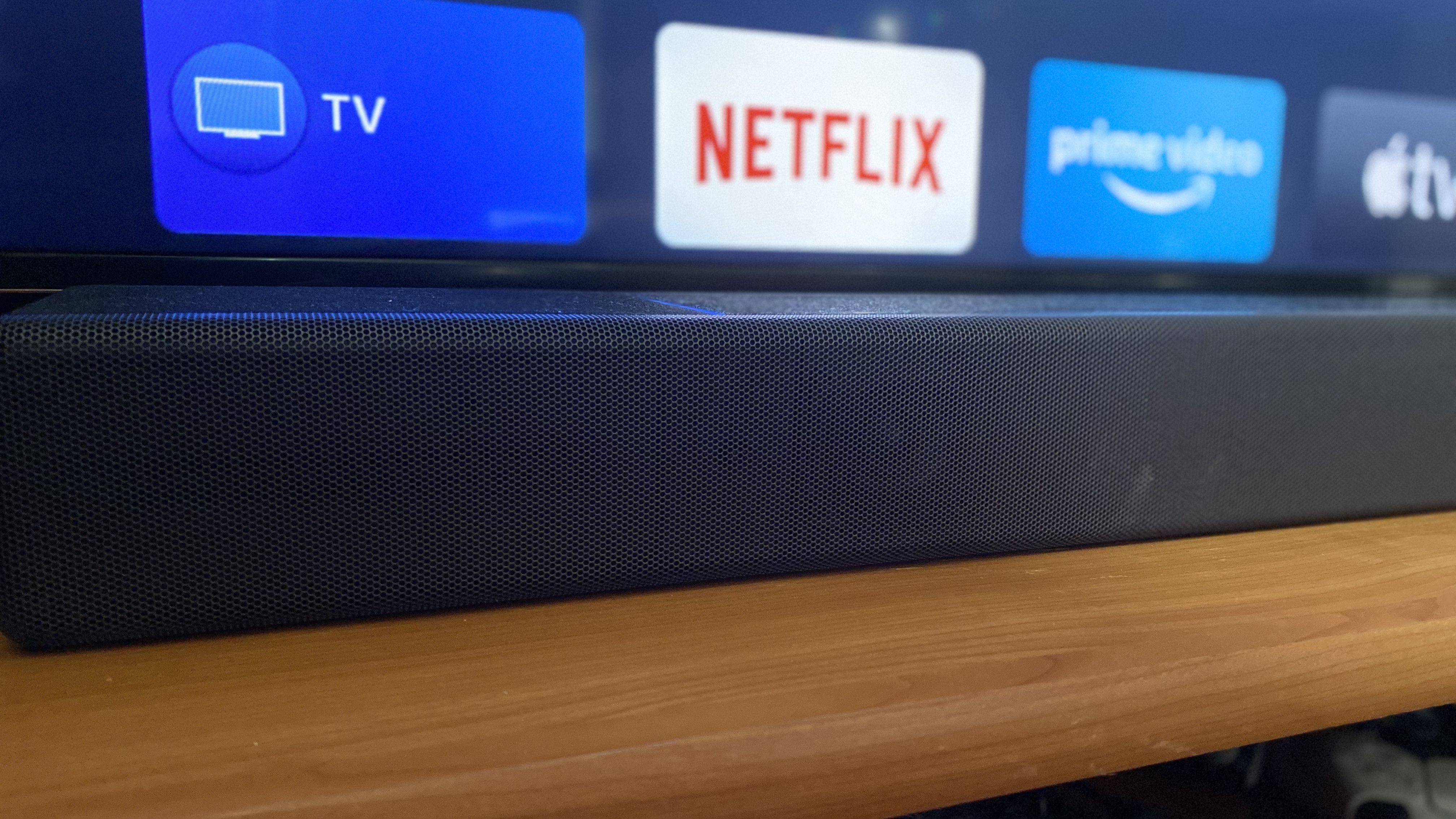
Performance
By itself, the Sony HT-A7000 is capable of producing a 7.1.2-channel sound. While that sounds like a lot of sound output - and it certainly is - it’s mostly focused around the mid-range if you don’t go in and manually change the EQ.
Out of the box, without any additional hardware hooked up, what you’ll hear is robust and clear dialogue. Throughout our testing, no matter the source, we were able to make out dialogue clearly, even when we changed the sound mode of the TV to something more dynamic, like, say the Cinema sound mode on a Sony TV.
The double woofers on the front of the bar do provide a bit of oomph - especially when you crank the volume up above the 60% mark - but they in no way replace what a discrete subwoofer can provide. The same can be said for the upfiring speakers and drivers responsible for surround sound that come off as a little weaker than what we’d like.
We also noticed that the soundbar cut out once or twice during our two-week testing period. It would happen without rhyme or reason and would momentarily cause the audio to stop before resuming - however, it was certainly annoying whenever it happened.
In terms of stereo imaging and soundstage, there’s a lot to like about the HT-A7000 - it’s a very musically talented soundbar. Testing out some 360 Reality Audio music, you get a real room-filling sound with a clear idea of where all the instruments are located.
Turning on some Spotify, we were impressed with the force of the soundbar and, again, that robust mid-range. Trebles could’ve been a little clearer and the bass - while easy to hear - just didn’t have the same depth that a separate sub can provide.
Overall, we feel most folks will be pleased with the sound quality the soundbar provides, but there is obvious room for improvement for whatever Sony designs next.
Should you buy the Sony HT-A7000 Soundbar?
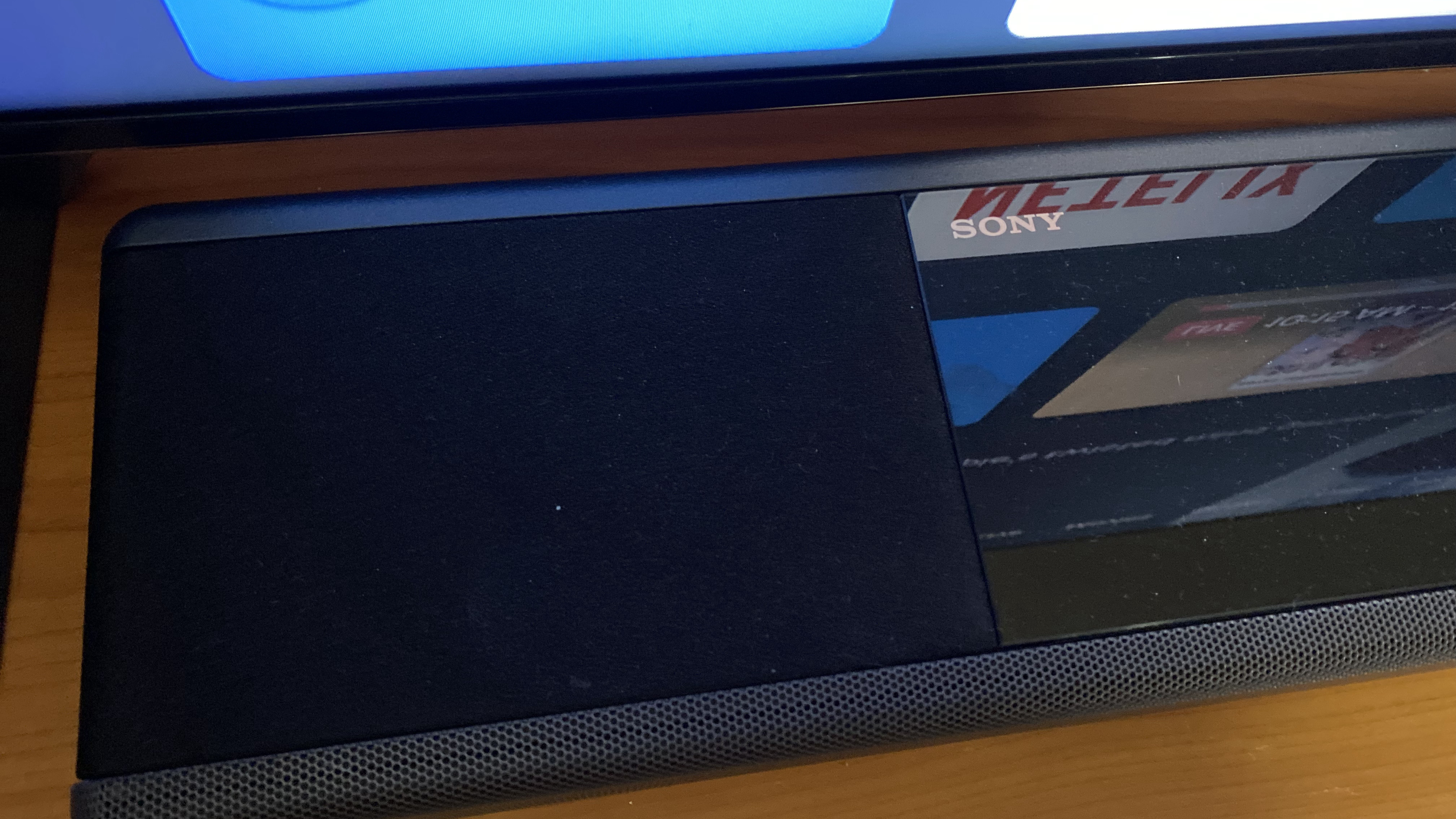
Buy it if…
You want a full-range soundbar that can play Dolby Atmos content
While the height channels could stand to be a bit stronger, overall the A7000 is a powerful soundbar that hits most of the right notes. It gives you a bit of everything right out of the box, and then you can always add more oomph to the bass or surround channels by picking up additional hardware.
You have two HDMI 2.1 devices and you want to save some ports
One of the biggest gripes we’ve heard about some TVs supporting just one or two HDMI 2.1 ports is that one of those belongs to the eARC port on the TV. The HT-A7000 allows you to effectively use that one eARC port as two more HDMI 2.1 ports - which is a huge boon for folks who have two (or more) HDMI 2.1 devices that need to be plugged in.
Don’t buy it if…
You want a complete system in a single box
Unfortunately, if you want a complete system with a sub-woofer and surround units in a single box, the HT-A7000 isn’t for you. Yes, those things are available to buy separately, but they’re relatively expensive compared to some HTIB systems from other manufacturers.
You want the full Dolby Atmos effect from a soundbar
We’ve known for years that getting a full surround sound effect from a soundbar has been, well, difficult. As more manufacturers have figured out how to do it thanks to room calibration features, we’re now at the point where we’re seeing the same thing happen with upfiring Atmos speakers. They’re good - but they’re just not the same as discrete speakers.
- Check out our guide to the best soundbars for even more options

Nick Pino is Managing Editor, TV and AV for TechRadar's sister site, Tom's Guide. Previously, he was the Senior Editor of Home Entertainment at TechRadar, covering TVs, headphones, speakers, video games, VR and streaming devices. He's also written for GamesRadar+, Official Xbox Magazine, PC Gamer and other outlets over the last decade, and he has a degree in computer science he's not using if anyone wants it.
